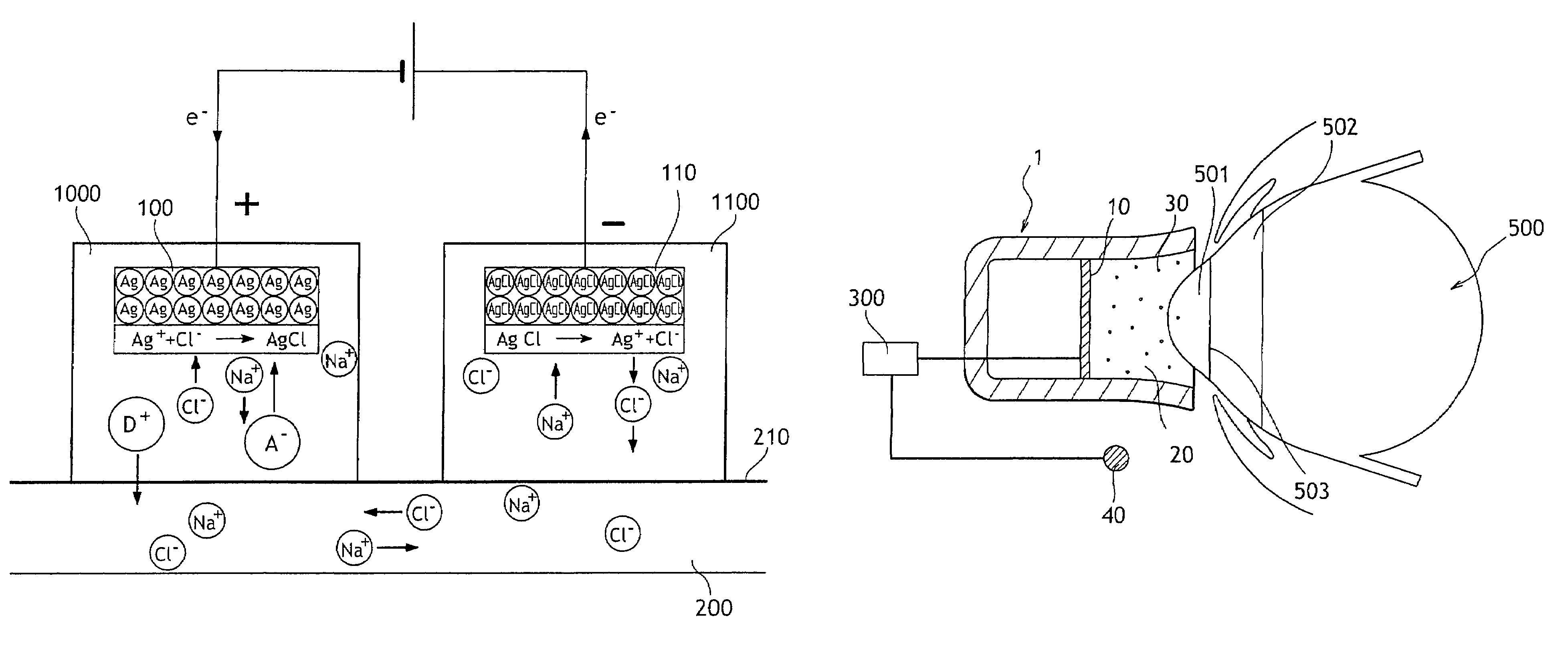Irritation-reducing ocular iontophoresis device
- Summary
- Abstract
- Description
- Claims
- Application Information
AI Technical Summary
Benefits of technology
Problems solved by technology
Method used
Image
Examples
Embodiment Construction
[0044]With reference to FIG. 2 there is shown very diagrammatically an ocular iontophoresis system comprising an iontophoresis device 1 including an active electrode 10, a reservoir 20, and at least one medication 30 stored in the reservoir 20, a passive electrode 40 enabling the electric circuit to be looped, and an electrical power supply 300 delivering DC to the electrodes 10 and 40.
[0045]The active electrode 10 is disposed in the reservoir 20 either by being fitted thereto or by being formed therein directly (e.g. by electroplating).
[0046]The reservoir 20 is made of an electrically insulating material, such as a plastics material, a silicone material, a polymer, or any other material of this type.
[0047]At least one medication 30 is placed in a gel or in solution, and is itself ionizable or is in a form that facilitates ionization (appropriate additives).
[0048]By medicament is meant any substance or composition that may be used on or administered to humans or animals as an aid in...
PUM
 Login to View More
Login to View More Abstract
Description
Claims
Application Information
 Login to View More
Login to View More - R&D
- Intellectual Property
- Life Sciences
- Materials
- Tech Scout
- Unparalleled Data Quality
- Higher Quality Content
- 60% Fewer Hallucinations
Browse by: Latest US Patents, China's latest patents, Technical Efficacy Thesaurus, Application Domain, Technology Topic, Popular Technical Reports.
© 2025 PatSnap. All rights reserved.Legal|Privacy policy|Modern Slavery Act Transparency Statement|Sitemap|About US| Contact US: help@patsnap.com



